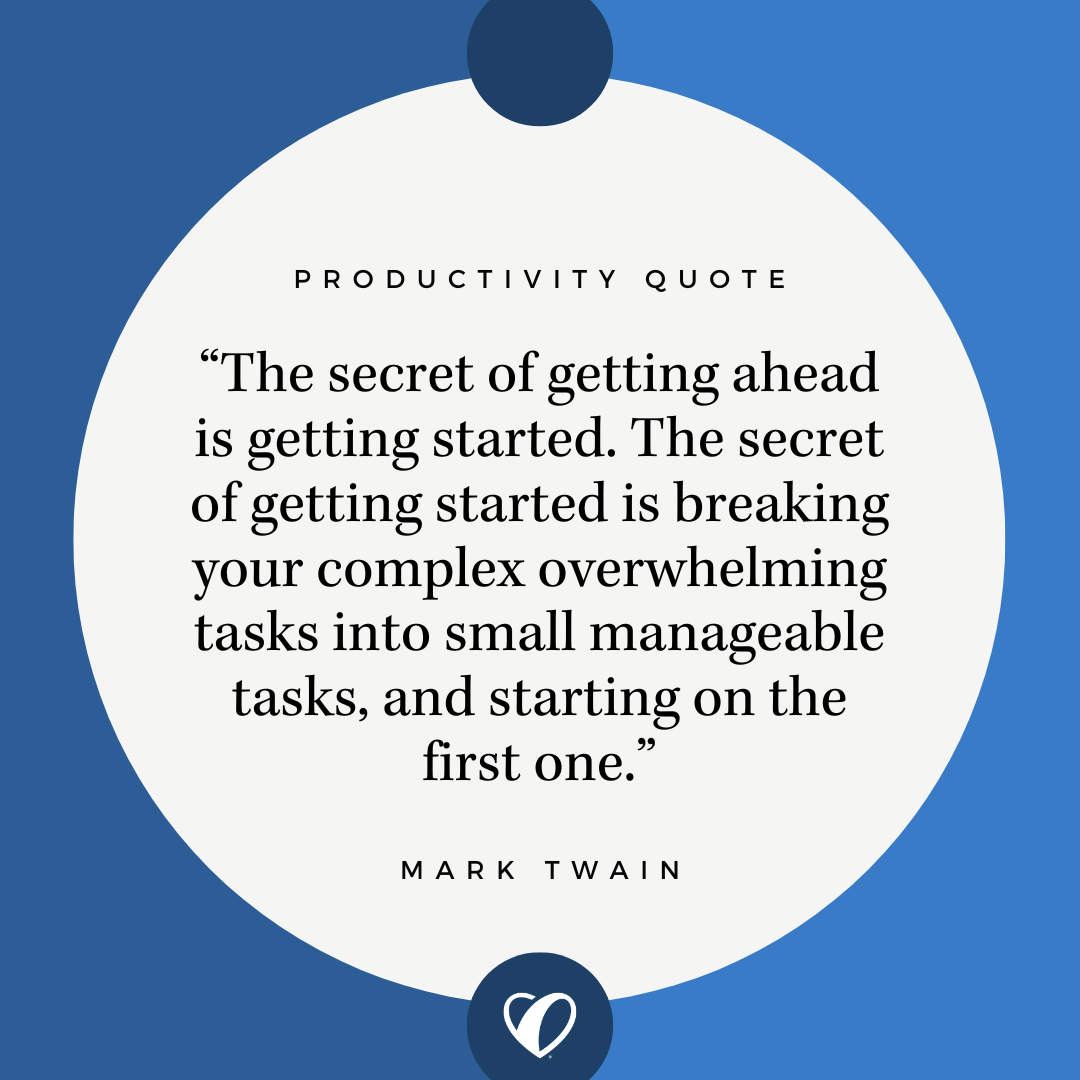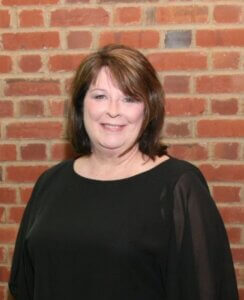Displaying items by tag: leadership management
Planning: Where the Rubber Meets the Road
 Many a well-thought-out strategy under-delivers its potential because there is no continuing framework for implementing it…no workable plan. How do we go from the choices of the ends and means of strategy to the steps and tasks of execution?
Many a well-thought-out strategy under-delivers its potential because there is no continuing framework for implementing it…no workable plan. How do we go from the choices of the ends and means of strategy to the steps and tasks of execution?
If we’re like many, we fail to see planning as distinct work in its own right. Rather, we think planning is something to rush through so we can get on with the work. Not so. Planning is a creative act, using the imagination God gave us to see something in our mind’s eye that does not currently exist and determine how to bring it to life. It’s parallel to God’s process of creation, except He can speak things into existence and we have to work things into existence.
How do we begin? Here’s an illuminating comment from a perhaps unexpected source. “The secret of getting ahead is getting started. The secret of getting started is breaking your complex overwhelming tasks into small manageable tasks, and starting on the first one.” Mark Twain
As an aside, in most cases working as a group will yield better plans than working on our own. Why is this? First, each member of the group brings a different array of knowledge and experience to the process. Second, members of the group build off the ideas of others in ways that can’t happen working alone. Third, the time when others are speaking in the conversation creates mental space for new connections that often does not occur when we’re on our own.
Back to the business at hand. At this link, Workplan, available for you to print, is a simple worksheet for breaking your complex tasks into manageable ones and beginning to get them done. Let me explain the columns:
- Projects/tasks. This column is for breaking what has to be done into projects and tasks. The definitions are simple: a project is something that has more than one task. A task is something someone can commit to accomplishing within a certain period of time. For example, in the worksheet, I’ve shown “launch new website” as a project and typical steps as tasks.
- Responsible. In all my work with groups, I’ve never had one that did not answer this question correctly in unison: If everyone is responsible, who’s responsible? Right, if everyone is responsible, no one's responsible. So this column is for assigning a single person responsibility for the project or subordinate tasks. To be clear, the person responsible may or may not be doing all the work, but regardless they are responsible for ensuring the work gets done.
- Resources. In this column, we think through in advance all that will be needed to complete the work. (In a similar vein, see Luke 14:28.) For the most part, resources fall into three categories:
- People. Who will help? Who from within your organization will contribute? What outside contacts can you tap? What areas of expertise or experience will you need, whether within or outside of your current circles to complete the work involved?
- Money. Many things dictated by our strategy choices—especially significant, high-leverage ones—require funding. Sometimes those funds are in the budget; sometimes it is a separate task to raise funds for the project. It’s important to be specific about the amount of money needed. It’s not enough in this column to say “funding” or “money.” Taking the website project as an example, if no one on the team has an estimate of what it costs to develop a website, getting an estimate becomes a task.
- Things. Even in today’s increasingly digital world, there are still things that are needed…a desk, a chair, a computer, a server, a screwdriver, a wrench. These may be things we have in hand that can be allocated to the project; they may also be things we have to freshly acquire.
- Timing. If we want to finish something eventually, we have to start it at a point in time. Every task, regardless of how small, has a duration, the amount of time it will take to complete. My wife will tell you after decades of experience, if I estimate a task will take a half hour, it will take at least an hour, if not an hour and a half, or even the whole morning. We need to be clear-eyed about establishing reasonable time parameters, reflecting not only the task itself but also taking into account other duties, obligations or commitments of those involved.
- Sequence. Taking the first column next, the Sequence column acknowledges that we won’t necessarily think of projects or tasks in the order they will eventually be done. Attempting to think of the work in sequence may, in fact, slow down the creative process. The Sequence column gives us permission and a process for sorting out the order of the operations once they’ve all been identified.
- Status. The Status column is the power column of the plan. When the team meets, after exchanging pleasantries and prayer, those responsible report the status of their tasks or projects in one of three categories: completed, on track, or off track. That gives us the opportunity to applaud workers and work completed; encourage those involved with tasks that are on track, but not yet done; and have a discussion about items that are off track. The intent of off track discussions is not guilt, blame and shame, but rather to apply the best thinking of the group to getting the matter back on track or, in some cases, concluding the task shouldn’t be done at all and should be taken off the plan. In essence, then, your workplan becomes the primary agenda item for your current meeting and the vehicle for planning what’s to be done between meetings.
Bringing the series to a close, in February, we discussed direction decisions—things like mission and vision. In March we talked about bridging from those high-level concepts by developing a strategy—choices of ends and means to fulfill your organization’s purpose. Finally, this month we’ve offered a simple framework for reliably translating strategy into robust plans for getting things done.
Assignment: Sometime soon, compare your processes to those discussed in the past three months. What elements of them could you adopt to make your processes more robust and your outcomes more reliable?
Zeke Swift is a Heartbeat International Board member and has facilitated strategy development with more than 40 for-profit and not-for-profit enterprises and groups over the past 20 years. He can be reached at This email address is being protected from spambots. You need JavaScript enabled to view it..
5 Principles of Ministry Growth
by Mary E Peterson, Housing Specialist
Heartbeat International
I was young and a little crazy when we started the pregnancy help organization. Someone said to me, in jest, "You are just too naïve to realize what you are attempting can't be done." Looking back, they were probably right. But nonetheless, God took me on a wild adventure of organizational development. Within fifteen years, I had the joy of sitting on my couch brainstorming the basics of a vision for a start-up ministry and I also had the joy of ribbon-cutting on our fifth location. For better and for worse, I experienced rapid organizational growth and learned a lot of lessons along the way. Here's a taste:
1) Know your mission. Grow from your mission.
I love a crazy new idea and lots of them were thrown at us -- run a ministry restaurant, start a theater troupe, build a neighborhood of low-income housing for single mothers. All of these captured my attention for a time but ultimately, were set to the side to stay focused on our core mission. Be really good at what you're good at. Be the ministry that the Holy Spirit breathed life into. Let the other stuff go...even if they seem wildly interesting.
2) Balance administrative growth with programmatic growth.
Programmatic growth is the fun stuff and it's the work that grantors and donors get excited about. But it is through building an administrative foundation that programmatic growth is sustained. Sometimes years’ worth of fundraising, staff development, and system building has to be done in order to grow well. If the foundation isn't strong, having the perfect furniture doesn't make sense.
3) Spend time on systems.
Systems are the plumbing to your organization -- getting information where it needs to go so that when you need it, it's there. Without systems, the entire organization experiences stress. Sometimes leaders who are great at big visions aren't great at systems. If that is case, get the right people involved to help build out the systems for your ministry. Growth is always disruptive but less so when strong organizational systems are in place.
4) Be wise and prudent. Be bold and courageous.
I love it when Scriptural ideas seem at odds, and this is a great example. Both statements are absolutely true. Plan, strategize, research, and consider. But also, dream, stretch, act, and step out in faith. Have a Board and staff around you that can do both!
5) Don't get ahead of your team.
The hard part of being a leader of vision is bringing the whole organization along. If you get too far ahead of them, you risk staff frustration, team exhaustion, and organizational strain. My rule of thumb as a leader was to peak ahead a few steps to see what major decisions lay ahead. I would begin to think about those decisions and gather information so that when it was time to consider them, we weren't starting from a blank slate. But your team needs to go on the journey with you -- and you might need to take the pace down to travel together!
Want to talk more about growth related ideas? Join us for a webinar on Growth and Ministry Development July 22, 2021 at Noon (Eastern)!
Succession Planning for Maternity Housing
by Peggy Forrest
Most of us would agree that any organization’s ability to successfully carry out its mission is tied to the quality of its leadership. Be that a President, CEO, or Executive Director - the effectiveness of that person’s leadership, makes a difference. So, it’s easy to understand why it is mission critical to ensure the next leader will be the correct one, and the transition from one leader to the next will be as smooth as possible. This is especially true in maternity housing because of the deeply personal nature of the work. Leadership transition is critically important, and having a plan guiding that effort will help reduce the stresses which accompany such a transition. Succession planning takes focus and effort. It involves the Board of Directors working in partnership with the current leader.
A succession plan has three main goals:
- Guide the Board in the recruitment and selection of new leadership.
- Facilitate a smooth transition
- Maintain continuity of operations and organizational sustainability
A succession plan contemplates:
- Planned departures
- Unplanned departures
- Internal talent development
A succession plan should include:
- A timetable - from notice to end of transition period
- A review of organization’s strategic direction
- The development of a leadership profile
- A recruitment strategy
- An onboarding and transition plan
- A communication strategy
Regardless of the age of your Agency, or the tenure of your leader, succession planning may be a timely and important topic to address during your Agency’s next strategic planning efforts.
Listen in to a podcast from Mary Peterson and Emily Prins on the same topic of succession planning!
Heartbeat International has additional information related to succession planning in our Governing Essentials Manual. Click here to find out more.
Strategic Planning as Worship Work
by Sue Baumgarten
Thinking strategically is not one of my top strengths. By nature, I’m a connector and a communicator, an activator and a mentor. But with almost 3 decades of board service, (respectful of term limits and built-in breaks) and also serving as an Executive Director for a few years, I am no stranger to Strategic Planning. And, I currently serve on the National Maternity Housing Coalition (NMHC) leadership council and we’re in the middle of Strategic Planning as I write this.
No "I" in Team . . .
by Andrea Trudden
Director of Communications & Marketing, Heartbeat International
There is no I in team, but there is me.
This is a silly take on a saying that we have all heard since little league. However, it is an important part of team leadership training. Hear me out.
When you invest in yourself to become a better leader, you need to take that “me” approach because you’re diving into the core of who you are and how you lead. You discover new ways to become a better leader.
And when you become a better leader, everybody around you benefits.
If you have attended the Leadership Track of our Pregnancy Help Institute, you know the importance of investing in yourself to directly impact the lives of those you interact with daily. Understanding how to truly hear people and how to effectively communicate helps alleviate many potential misunderstandings. It also allows you to intentionally connect with people and pour into their lives.
From our home to the office, our spouses, children, and colleagues all receive the nurturing care that true leadership training provides.
As a team here at Heartbeat, we recently completed the Whole Intentional Leader Development (WiLD) program, an online set of tools that “builds self-awareness, connects the dots between who you are, why you are, and what you do, and scaffolds the transformational conversations necessary to prepare you for the road ahead as a leader and as someone called to make a difference in the lives of others. that is available to both individuals and teams.”
While on my own, this would have impacted my specific leadership style – going through the program together allowed us to share this experience and grow as a team.
We are blessed to have a strong leadership team here at Heartbeat. We are a mixture of introverts and extroverts, men and women, millennials and baby boomers. Utilizing our (in some cases, very different) strengths for Heartbeat, allows us to lead it effectively. A good team utilizes the strength of each individual within it.
I will admit, I enjoy learning. If you look at my bookshelf, there are several books on leadership and parenting. Coincidentally there are a lot of the same lessons within each. However, to be honest, I was hesitant to walk through a leadership program as a team as it would require a certain degree of vulnerability.
Throughout our time together, there were a few weeks when we were asked tough questions. Well, I thought they were tough questions.
Many of my colleagues answered these very easily and seemed to know the exact answers. Questions that I struggled deeply with, they were laughing about and offering answers at will!
These moments were a bit intimidating. They were also moments of growth.
Because of the trust I have with my team, I admitted when I struggled. This opened the door to some amazing conversations that both helped me grow personally, but also enlightened others to the fact that a few of us, in fact, were on a different experience level, and perhaps we needed to focus a bit on certain leadership areas.
Walking through the WiLD program together was a good reminder that depending on our age, experience, and/or personality styles, we are all unique individuals utilizing our individual strengths to achieve a common purpose.
We do not lead at Heartbeat with an iron fist. We work together as an effective team with an open-door policy. Walking through a leadership training together reinforced the importance of transparency.
By trusting one another and walking through this activity alongside one another, we were able to lift each other up, strategize to overcome obstacles, and plan effectively for the future.
This is not a first for Heartbeat, nor is it a last. We believe in investing in ourselves to grow as individuals because we know that when we as leaders of the pregnancy help movement take time to nurture those around us, we inspire! And when we inspire others, we change the world!
Heartbeat has an exclusive offer for U.S. affiliates in good standing. Heartbeat International is partnering with WiLD Leaders to provide this professional training for pregnancy help leaders to advance their leadership skills. Working with WiLD Leaders, Heartbeat-affiliated Executive Directors, Presidents and CEOs can delve deep to grow as individuals and lead intentionally. Learn more.
Tecumseh...
by Chet Scott, Built to Lead
Courage, it’s been said by many, is really the first of the virtues because without it none of the others may be evoked. Today, I ripped my client a new one because he was caught in the downward spiral of blaming the King for his plight. You see, he sees his partner as his King. Most of us humans see someone in our work/life as THE man and cower in fear. My client needed a lesson in courage, so I gave him one and it was not nice. I used some colorful language to get his attention and asked him if wanted to be led around for the next thirty years like a miniature mouse, or did he want to learn how to stand like a man. We ended our practice with him deciding it was time to man up and simply stand.
Most of us need to learn how to stand.
Standing does not mean you get even, angry, or even whole as a result. Standing means you simply live your core and release the catastrophic fear around the outcome. You and I will someday die. Make it a good one when it’s time. Do not go out begging for more time, another chance, or whimpering/complaining about your King. Go out like Tecumseh, singing your song.
“So live your life that the fear of death can never enter your heart. Trouble no one about their religion, respect others in their view, and demand they respect yours. Love your life, beautify all things in your life. Seek to make your life long and its purpose in the service of your people. Prepare a noble death song for the day when you go over the great divide. Always give a word or sign of salute when meeting or passing a friend, even a stranger, when in a lonely place. Show respect to all people and grovel to none. When you arise in the morning give thanks for the food and the joy of living. If you see no reason for giving thanks, the fault lies in yourself. Abuse no one and no thing, for abuse turns the wise one to fools and robs the spirit of vision. When it comes your time to die, be not like those whose hearts are filled with the fear of death, so that when their time comes they weep and pray for a little more time to live their lives over again in a different way. Sing your death song and die like a hero going home.”
Courage is not the absence of fear, it’s knowing and loving someone/something just a little bit more. More love is the enabler of courage. More love.
Live hard. Love harder. Good…
This blog post originally appeared at the Built to Lead blog. We are grateful to have this executive coaching program that has trained CEOs, presidents, and ministry leaders nationwide guide our Leadership Track at Pregnancy Help Institute each year. Join Chet, his team, and us for this year's unique virtual experience of Pregnancy Help Institute!
What you need to know now about the U.S. Coronavirus relief effort
by Tony Gruber, Controller
Heartbeat International
The coronavirus is perceived by many as the largest challenge our world has faced in many decades. In answer to that challenge, the United States has enacted the largest aid package in the history of the country – with a $2.2 trillion estimated price tag. Help and aid is being offered to individuals, businesses and non-profits.
We’re going to unpack many of these benefits in a webinar next Tuesday. However, we’d like to quickly highlight one opportunity because it won’t last long!
Stay on Target! Our Mission Remains
by Jor-El Godsey, LAS, President
Heartbeat International
“Stay on target!” is a familiar line from the first Star Wars movie. The small band of intrepid rebels were being exhorted to keep focused on defeating the planet-killing Death Star. All while being attacked by Darth Vader and his Imperial cohorts.
During “normal” times the mission of pregnancy help is facing a Goliath-like giant in Big Abortion and its flagship, Planned Parenthood. Of course, these days impacted by COVID-19 (or at least the anxiety surrounding it) are far from normal. There is a very present need to reach and rescue as many lives as possible.
Are You Composed Under Pressure?
That's the question Dr. Rob McKenna has for you and all leaders leading up to the 2020 Heartbeat International Annual Conference this April.
The findings at WiLD Leaders? It's a matter of purpose.
Check out Dr. Rob McKenna's message to you below as he prepares to share more with you through his PEG Talk and Deeper Dive at this year's Heartbeat International Annual Conference in Seattle.
Dr. Rob McKenna from WiLD Leaders
Life Launch Grant Assessment
Heartbeat International's Pregnancy Help Center Life Launch Grant is designed to inspire a new season of pregnancy help center start-ups by supporting individuals opening brand new centers in areas primed for more life-saving outreach. The grant is created to help start-ups open their doors and advance pregnancy help to new communities throughout the United States. Qualified candidates will initially be considered for $10,000 in in-kind resources. Additionally, Life Launch candidates who have been accepted as full recipients may also be considered for operational grant opportunities. Qualified candidates will be considered based on available funding for the Life Launch Grant Program.
This initial qualification assessment will help to identify if you qualify as a start-up pregnancy help center in an underserved community. Please note that if you answer "no" to any of these questions, it does not mean that you are automatically disqualified from the program. To discuss Heartbeat International resources available to startup organizations, please contact Heartbeat International’s Affiliate Services Specialist, Sara Dominguez, at This email address is being protected from spambots. You need JavaScript enabled to view it..

